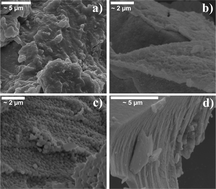The production of nanoparticulate ceria using reverse micelle sol gel techniques†
Abstract
Mesoporous ceria

* Corresponding authors
a
School of Chemistry, College of Physical and Applied Sciences, Bangor University, Gwynedd, UK
E-mail:
s.e.masson@bangor.ac.uk
Fax: +44 1248 370528
Tel: +44 1248 388433
b ICPF AS CR, Rozvojova 2, Prague 6, Czech Republic
Mesoporous ceria

 Please wait while we load your content...
Something went wrong. Try again?
Please wait while we load your content...
Something went wrong. Try again?
S. Masson, P. Holliman, M. Kalaji and P. Kluson, J. Mater. Chem., 2009, 19, 3517 DOI: 10.1039/B820098J
To request permission to reproduce material from this article, please go to the Copyright Clearance Center request page.
If you are an author contributing to an RSC publication, you do not need to request permission provided correct acknowledgement is given.
If you are the author of this article, you do not need to request permission to reproduce figures and diagrams provided correct acknowledgement is given. If you want to reproduce the whole article in a third-party publication (excluding your thesis/dissertation for which permission is not required) please go to the Copyright Clearance Center request page.
Read more about how to correctly acknowledge RSC content.
 Fetching data from CrossRef.
Fetching data from CrossRef.
This may take some time to load.
Loading related content
